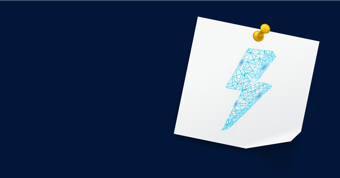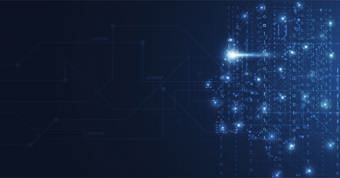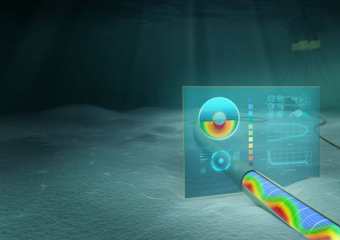
Achieving meaningful stakeholder engagement
The industry has more or less agreed on the broader definition of a digital twin: it’s a virtual replica of facilities that becomes the strategic industrial work surface, complete with contextualized industrial data. For owners/operators overseeing complex asset portfolios, digital twins offer a way to drive digital standardization and scale quickly by unifying data and work processes. Digital twin technology enables everyone in the organization to make the best decision every time.
-
Text:Haavard Oestensen, Vice President Growth
Organizations need to rally around digital twin initiatives because they:
- Support easier and more engaging work for staff in the field and in the office
- Link directly to asset performance objectives
- Enable the future of work
Effortless efforts for staff
As things stand today, roles such as production engineers, maintenance engineers, supply chain workers, and remote operations staff still use disparate systems – and to make things worse, owner/operators can have up to 20 or even more systems that they interact with regularly! You can just imagine the organizational challenge of dealing with a complex landscape system that includes ERP systems, real-time data dashboards, hydrocarbon accounting, control systems HMI, reports, 3rd party proprietary access systems… and this of course has a run-on effect for users who spend hours searching, compiling, and building presentations and custom spreadsheets from all this information spread across systems to gather the necessary decision support.
Luckily, it’s not that difficult to make work easier for staff. With one unified environment where users can access meaningful, contextualized asset information at their fingertips, day-to-day work processes can become simplified. With features such as industrial asset data search and visualized information, users can do everything from searching for a specific pump to locating and visualizing a utility subsystem. A digital twin makes it easy for you to understand the value gain when you can see everything in one system, on your very own computer screen, from the comfort of your own home (or anywhere else you want to go).
What matters for management
Business cases need to mirror the digital twin focus areas so that management and stakeholders can engage around the asset performance objectives. Understanding the business cases (like those mentioned below) helps stakeholders engage with the concept of a digital twin and how it can elevate objectives across the value chain.
Business cases:
- Reduction of unplanned downtime
This is a valuable objective that can help mitigate missed forecasts and production deferments. Did you know that the impact of unplanned downtime across upstream operators amounts to almost 50 million USD annually? This is an area where digital twins can have a tangible impact in building end-to-end visibility, integrated planning and execution, and live debottlenecking. Simulation capabilities with contextualized data builds predictive maintenance and performance analytics, making sure that you get maximum throughput from equipment to increase efficiency.
- Energy efficiency
This business case will continue to grow as existing facilities look to become energy parks with associated infrastructure to support offshore wind, hydrogen, solar, and more. Digital twin technology helps implement energy efficiency in larger volumes of assets that are major energy consumers by enabling users to implement realistic offtake nominations that align with production plans.
- Emissions management
The digital twin provides a data foundation that can be expanded and augmented with virtual sensors to address regulatory reporting requirements. IoT, virtual sensors, and emissions give a better understanding of where emissions are coming from so that the issue can be addressed at the source. End-to-end sustainability goals rely on incorporating best practices in areas such as carbon capture and storage (CCS), and this is an area where a digital representation of facilities in one environment can really add value by providing holistic insights of operations.
The future of work with digital twins
How can we truly enable the future of work so that entire organizations can rally around digital twin initiatives that enable strategic decision-making for the long term? Today’s investment can position you as an individual, organization, or industrial asset portfolio operator for a better future.
For individuals, digital twins can revolutionize the way users work by reducing the amount of time spent on swimming through the corporate data lake. Instead of struggling with data preparation, users can access data that is structured in a logical way to pull together information, documents, Real-Time data feeds, and more into a live digital 3D or P&ID model. Here are some more ways that digital twins help the individual to realign for the future of work and enjoy more meaningful and impactful ways of working:
- Situational awareness on quality control and engineering data handover, with the ability to ask for assistance from experts working remotely
- Integrated workflows that automate routine tasks and brings end-users to the point
- Text string searches, just like you would search for something in Google
- Access to AR and VR for an immersive experience and realistic support
- Focus on what matters and contribute more to high quality and high impact items
If you can access the full scope of asset information in the cloud, do you need to do physical site visits each time? For organizations, digital twin tech opens up the opportunity to expand the scope of asset management into remote operations and unlock true data-driven operations. By presenting one environment where processes can be analyzed, monitored, and executed, the digital twin removes noise to present an ecosystem that supports collaboration, building stronger teams, and elevating performance. In addition, the asset itself can use data to call on services from the ecosystem and bring in the right people and expertise when necessary. The result: thousands of O&M hours saved so that people can focus on the things that matter most.
From a portfolio point of view, an integrated work surface provides centralized support and expertise in a single integrated environment. The ability to leverage expertise from various teams across assets and asset energy systems is revolutionary. Everyone in the organization from field workers and maintenance staff to owner/operators and stakeholders can understand the end-to-end impact of operations, from the production value chain right through to CO2 emissions. Facilities can be benchmarked against one another, loads can be shifted as required for delivery, shutdowns can be avoided, and organizations can capitalize on shifts in costs of raw materials.
Forward thinking
The industry is evolving and will continue to do so. There are two important things going forward:
- Enable communities that add value: Digital twins should bring the most relevant and valuable data to end-users. Where this requires partnering to create a broader ecosystem, or rather a system of systems, the industrial tech space should bend to accommodate this. Some examples of KDI’s recent partnerships include piloting seamless integrations between digital twins and enterprise reliability data with C3 AI, allowing engineers to select parameters for machine learning modelling in a digital twin environment using P&IDs and 3D views. We’ve also partnered with FutureOn to provide an end-to-end digital experience for the benefit of our customers.
- Encourage organizations to support digital twin technology initiatives: That includes from top to bottom and bottom up. Only when business strategies align with operational activities can digital twins be leveraged for strategic advantages and safer operations. To drive the energy transition forward, it is critical for everyone involved to engage on all levels with a mindset of starting small, thinking big, and scaling fast.


